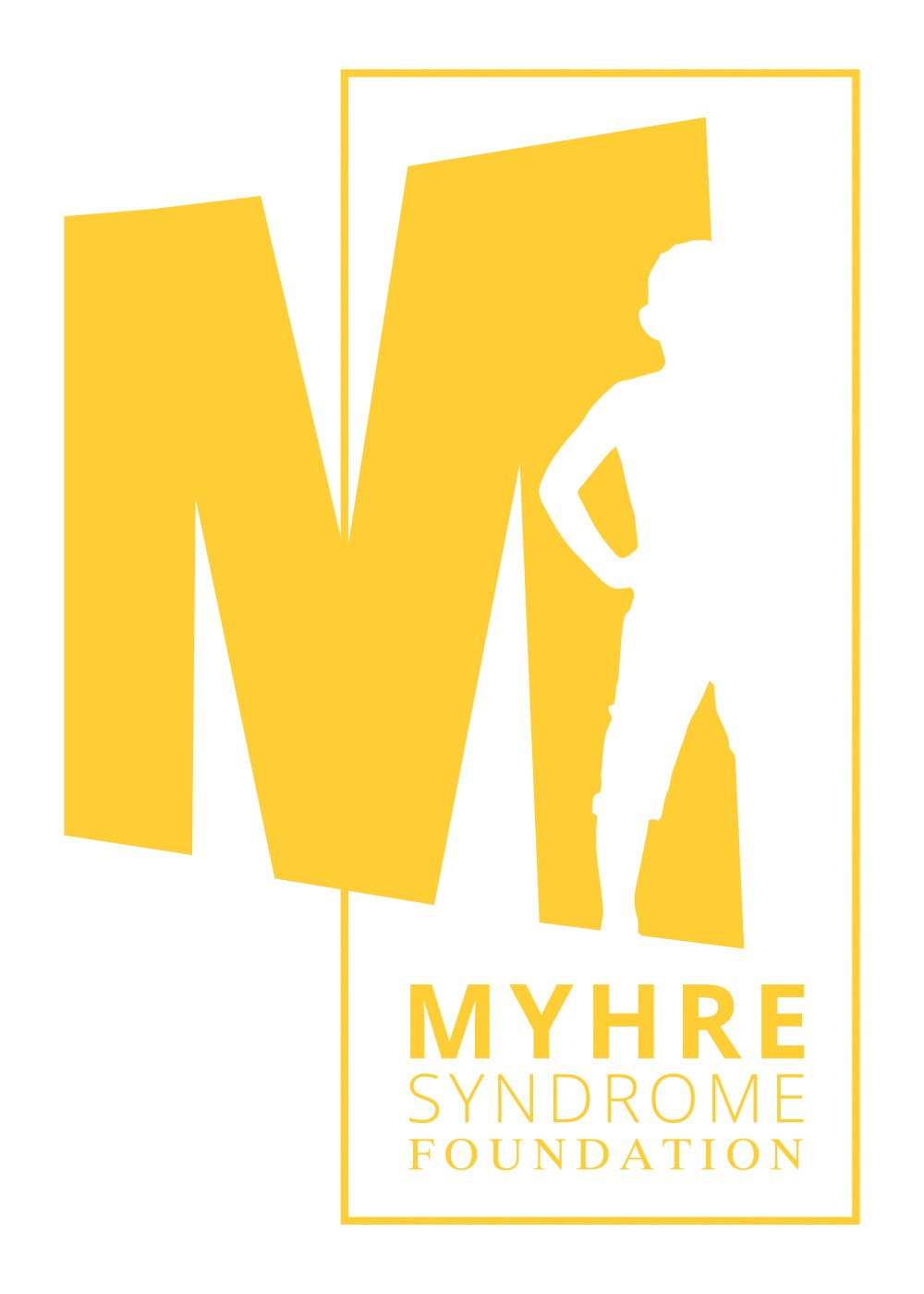Emergency Information
If someone with Myhre syndrome is seen in the Emergency Department, the following information will help providers quickly.
Always try to contact the Primary Care Provider or appropriate Specialist (for example Cardiologist, Pulmonologist, ENT, etc)
This is a partial list of internal problems and defects that might lead someone to present to the ED.
High blood pressure.
Respiratory distress which can be caused by stiff chest wall, interstitial lung disease, or reactive airway disease.
Upper airway disease due to narrowing of the larynx and trachea.
Unexplained symptoms, which could be due to pericarditis.
Unexplained symptoms following trauma or surgery.
Unexplained severe menstrual bleeding.
Unexplained severe chest or abdominal pain.
Emergency Airway Management (Refenced from Table 5)
Mask ventilation should be used when possible.
When intubation is performed, the smallest endotracheal tube should be used, and cuff pressure should be monitored at less than or equal to 15 cm H20
Intubation should be performed by the most experienced provider.
This is not intended to be a treatment algorithm but to help an ED team evaluate.
Created with the assistance of the Co-Directors of the Myhre Syndrome Clinic at Massachusetts General Hospital, Boston, USA. Information has been referenced from the research study of Lin et al, 2024 Emergence of the natural history of Myhre syndrome: 47 patients evaluated in the Massachusetts General Hospital Myhre Syndrome Clinic (2016-2023)
Phone: 617-726-1561 (this is the general office clinic line please be aware Dr. Lin may not be available)
MGH Paging 617-726-2000 (please be aware Dr. Lin may not be available )
Angela E. Lin, MD, Staff Geneticist, MGH for Children, alin@mgb.org
Mark E. Lindsay, MD, PhD, Cardiologist, MGH, Lindsay.mark@mgh.harvard.edu
Emergency Card
Huge thanks to the Patient Advocacy Team for creating this handy wallet-sized Emergency Card. It has crucial information if you are in an emergency and need to brief first responders and emergency teams. The QR code on the card takes you straight back to this page, so you also have the information above to hand. We recommend giving these to family members, childcare providers, teachers, and school and university nurses.
You can order printed cards, which we will send you free of charge—just complete the form below. (We’ll send you a minimum of 5, but if you’d like more, let us know!)
You can also print these out locally or at home by following these instructions.
1. Download this PDF
2. Select Print.
3. You might need to click More Settings.
4. Select Two Sides.
5. Ensure it is selected to Flip on Long Edge.
Translated cards will be coming soon!


